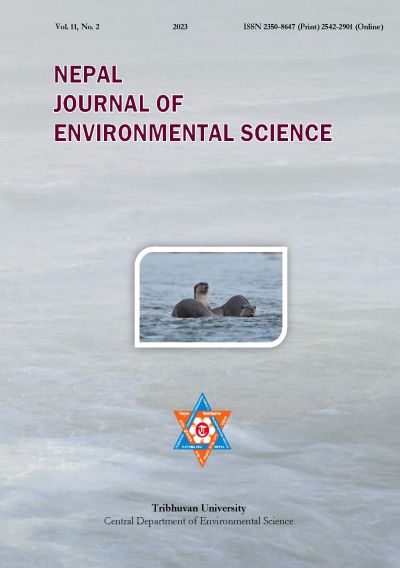Landslide susceptibility mapping of the Main Boundary Thrust region in Mandre - Khursanibari section of Arghakhanchi and Palpa Districts, Lumbini Province, Nepal
DOI:
https://doi.org/10.3126/njes.v11i2.58152Keywords:
Frequency ratio, landslide susceptibility, MBT, Mandre-Khursanibari, Lumbini provinceAbstract
The Mandre-Khursanibari section of Arghakhanchi and Palpa districts consists of numerous landslides, small to large. Prospecting weak geological sections like the location of the Main Boundary Thrust (MBT) and inherently weak lithological settings in addition to other factors are the main objectives of the present research. In this study, the results of the landslide susceptibility analysis using frequency ratios (FR) are assessed. The Mandre-Khursanibari segment was subjected to landslide detection using imagery (Google Earth) with a spatial resolution of 50 cm. The landslide inventory was used to construct training and testing data. Based on topographic, geological, and land-use maps, nine contributing variables were identified. The FR ratings were established using the contributing elements and training data. The map illustrating landslide risk was produced by integrating the influencing components that determined FR ratings. The ROC-AUC curve shows a validation rate of 82.2 % in the present model of LSI. The three most important elements in the occurrence of the landslide, out of the nine potential causes, are distance from the thrust (MBT), land use, and distance from the road. However, the role of adverse lithological setting is found to be a minor in many sections of this region. The MBT is one of the main causes of landslides in this area.
Downloads
Downloads
Published
How to Cite
Issue
Section
License
Copyright (c) 2023 Central Department of Environmental Science, Tribhuvan University

This work is licensed under a Creative Commons Attribution-NonCommercial 4.0 International License.
This license enables reusers to distribute, remix, adapt, and build upon the material in any medium or format for noncommercial purposes only, and only so long as attribution is given to the creator.




